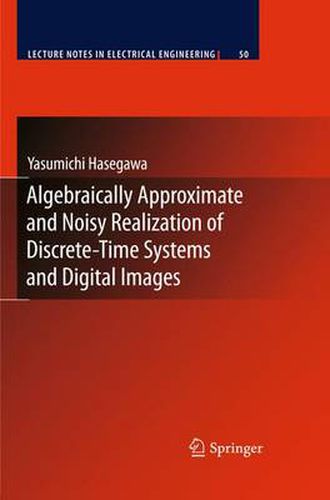Readings Newsletter
Become a Readings Member to make your shopping experience even easier.
Sign in or sign up for free!
You’re not far away from qualifying for FREE standard shipping within Australia
You’ve qualified for FREE standard shipping within Australia
The cart is loading…






This title is printed to order. This book may have been self-published. If so, we cannot guarantee the quality of the content. In the main most books will have gone through the editing process however some may not. We therefore suggest that you be aware of this before ordering this book. If in doubt check either the author or publisher’s details as we are unable to accept any returns unless they are faulty. Please contact us if you have any questions.
This monograph deals with approximation and noise cancellation of dyn- ical systems which include linear and nonlinear input/output relationships. It also deal with approximation and noise cancellation of two dimensional arrays. It will be of special interest to researchers, engineers and graduate students who have specialized in ?ltering theory and system theory and d- ital images. This monograph is composed of two parts. Part I and Part II will deal with approximation and noise cancellation of dynamical systems or digital images respectively. From noiseless or noisy data, reduction will be made. A method which reduces model information or noise was proposed in the reference vol. 376 in LNCIS [Hasegawa, 2008]. Using this method will allow model description to be treated as noise reduction or model reduction without having to bother, for example, with solving many partial di?er- tial equations. This monograph will propose a new and easy method which produces the same results as the method treated in the reference. As proof of its advantageous e?ect, this monograph provides a new law in the sense of numerical experiments. The new and easy method is executed using the algebraic calculations without solving partial di?erential equations. For our purpose,manyactualexamplesofmodelinformationandnoisereductionwill also be provided. Using the analysis of state space approach, the model reduction problem may have become a major theme of technology after 1966 for emphasizing e?ciency in the ?elds of control, economy, numerical analysis, and others.
$9.00 standard shipping within Australia
FREE standard shipping within Australia for orders over $100.00
Express & International shipping calculated at checkout
This title is printed to order. This book may have been self-published. If so, we cannot guarantee the quality of the content. In the main most books will have gone through the editing process however some may not. We therefore suggest that you be aware of this before ordering this book. If in doubt check either the author or publisher’s details as we are unable to accept any returns unless they are faulty. Please contact us if you have any questions.
This monograph deals with approximation and noise cancellation of dyn- ical systems which include linear and nonlinear input/output relationships. It also deal with approximation and noise cancellation of two dimensional arrays. It will be of special interest to researchers, engineers and graduate students who have specialized in ?ltering theory and system theory and d- ital images. This monograph is composed of two parts. Part I and Part II will deal with approximation and noise cancellation of dynamical systems or digital images respectively. From noiseless or noisy data, reduction will be made. A method which reduces model information or noise was proposed in the reference vol. 376 in LNCIS [Hasegawa, 2008]. Using this method will allow model description to be treated as noise reduction or model reduction without having to bother, for example, with solving many partial di?er- tial equations. This monograph will propose a new and easy method which produces the same results as the method treated in the reference. As proof of its advantageous e?ect, this monograph provides a new law in the sense of numerical experiments. The new and easy method is executed using the algebraic calculations without solving partial di?erential equations. For our purpose,manyactualexamplesofmodelinformationandnoisereductionwill also be provided. Using the analysis of state space approach, the model reduction problem may have become a major theme of technology after 1966 for emphasizing e?ciency in the ?elds of control, economy, numerical analysis, and others.